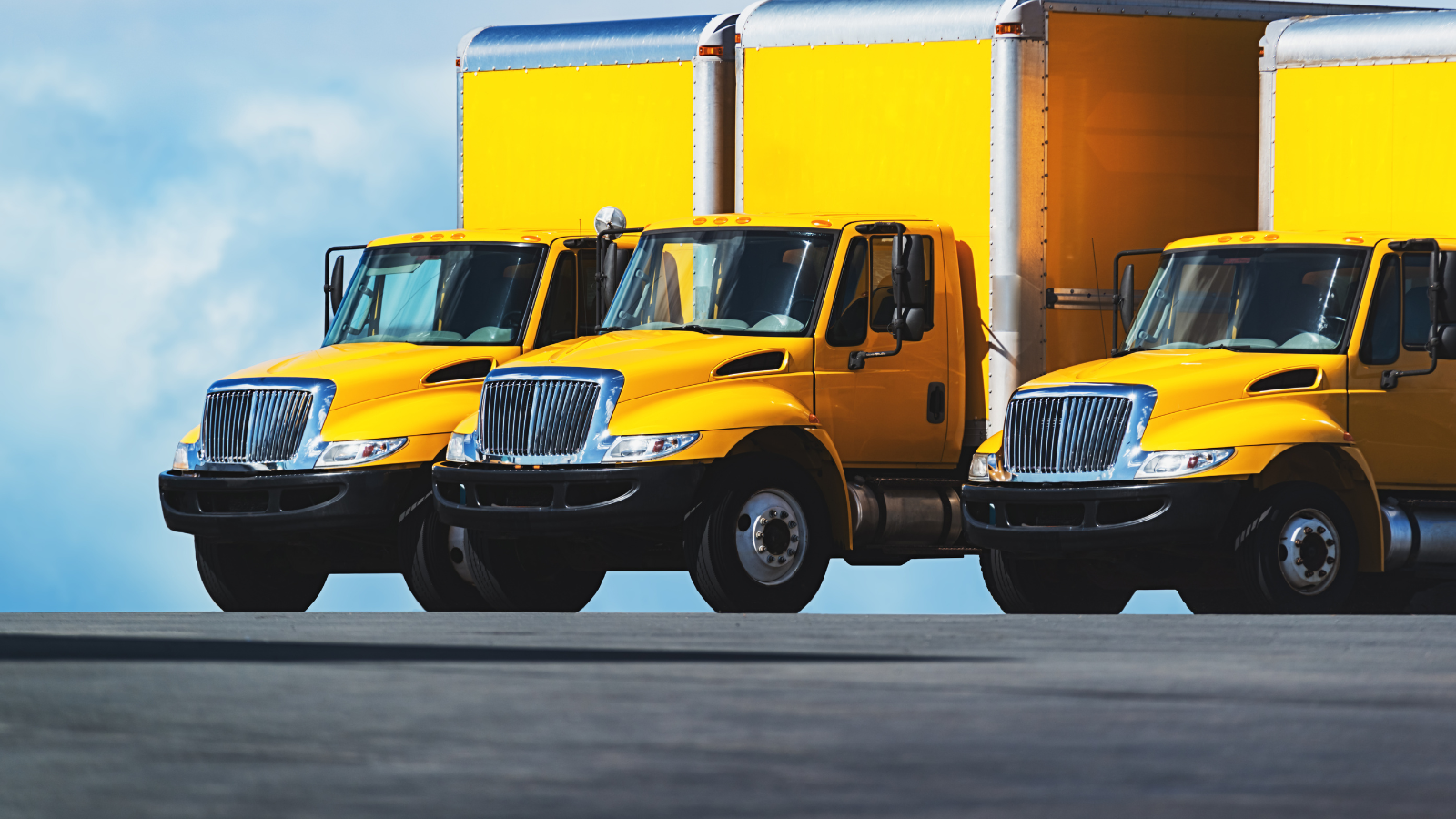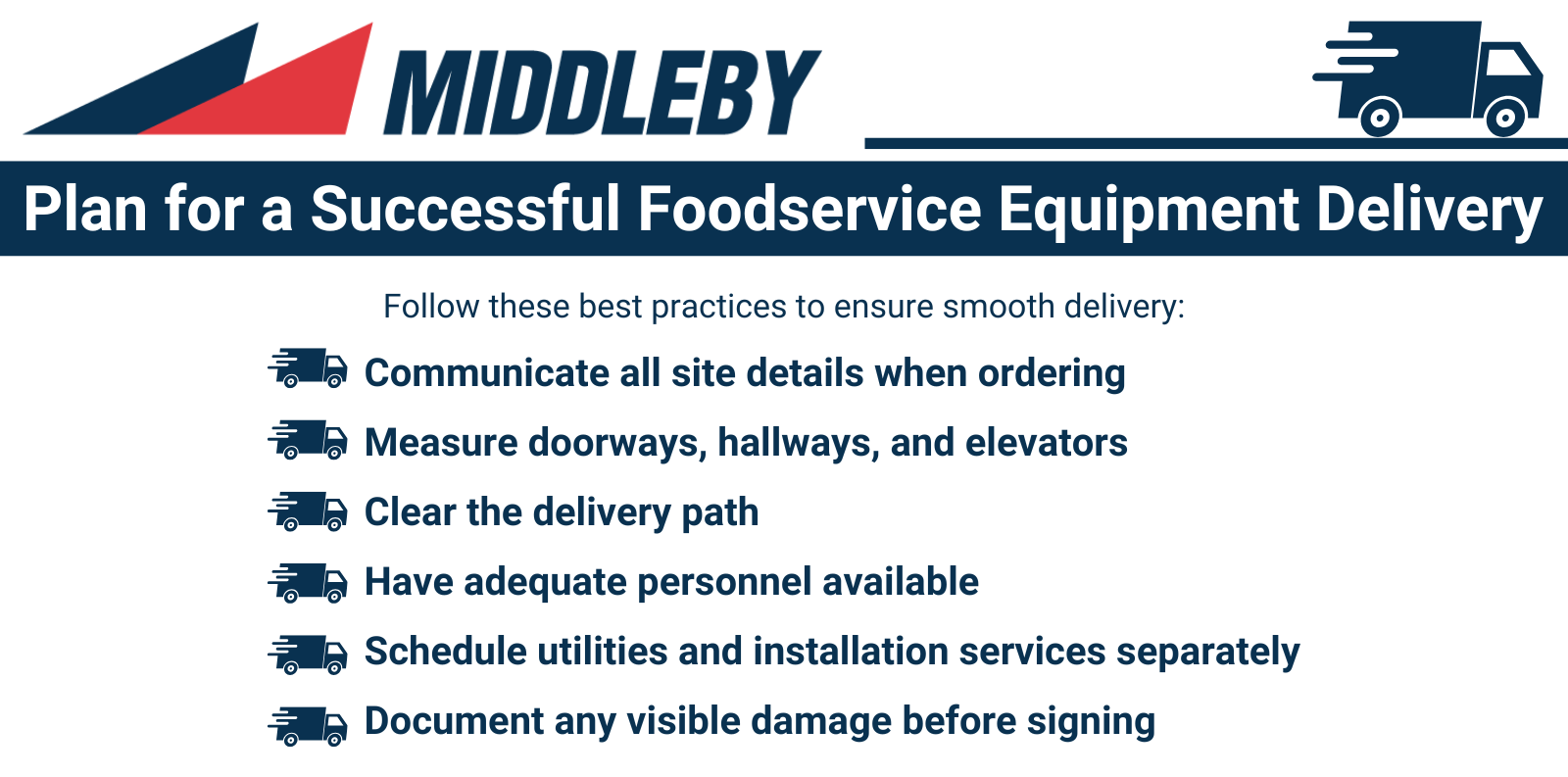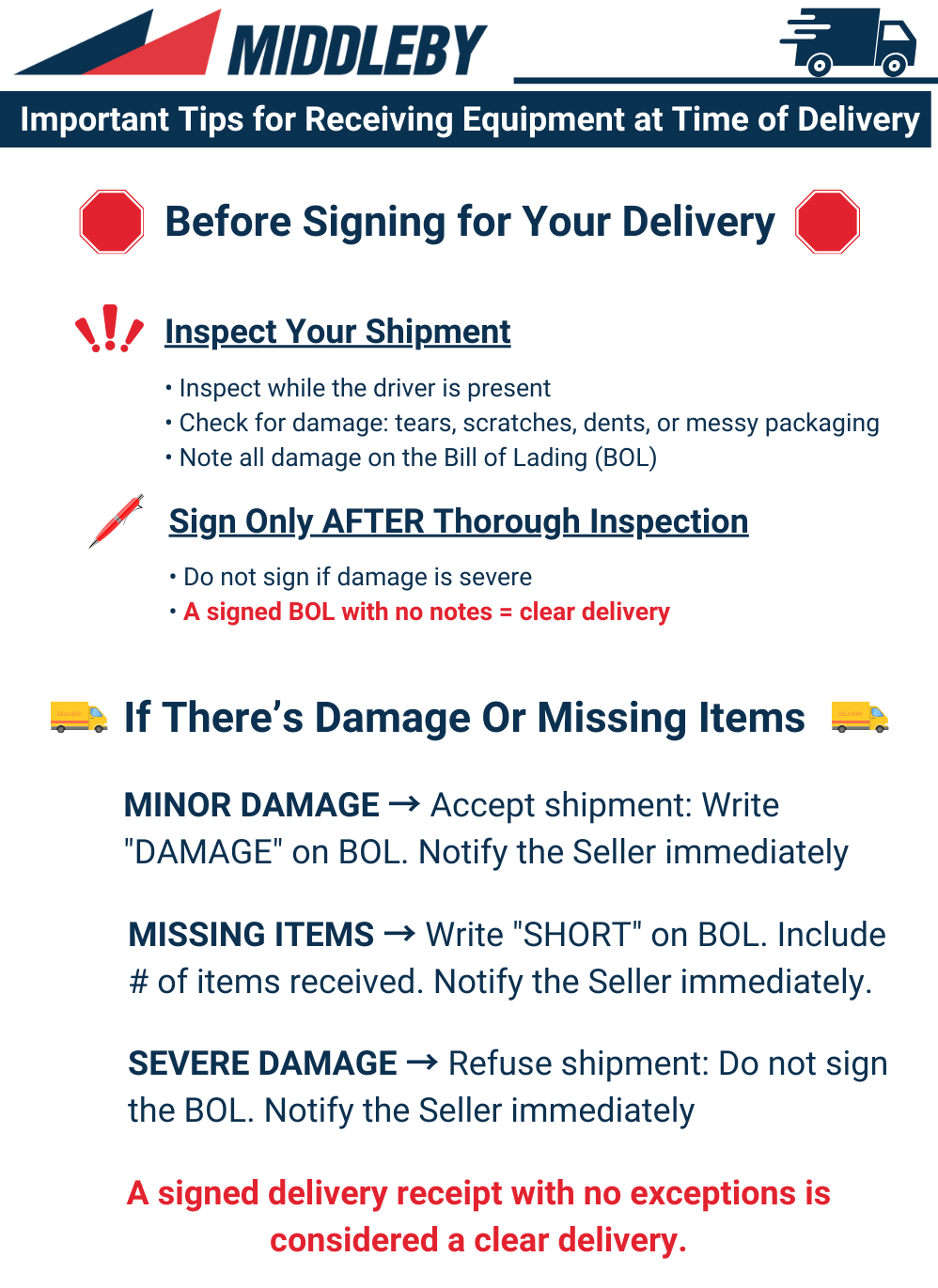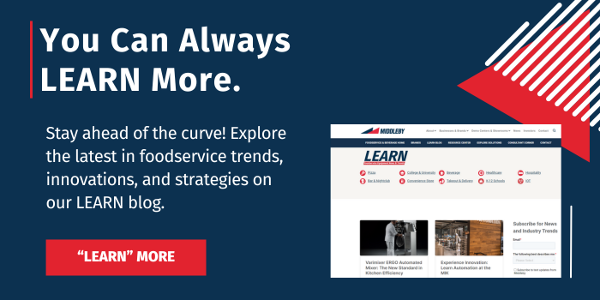What to Know Before Your Commercial Kitchen Equipment Arrives

You’ve done the research. You selected the right commercial kitchen equipment for your operation. You’ve placed the order. But now what? Understanding what happens after you click “purchase” is crucial for ensuring your new equipment arrives safely and gets installed properly. Here’s what every foodservice operator needs to know about receiving commercial kitchen equipment:
Types of Shipping: Parcel vs. LTL Freight
Not all shipments are created equal. Smaller items like replacement parts or countertop equipment typically ship via parcel carriers like UPS or FedEx. However, larger commercial kitchen equipment requires less-than-truckload (LTL) freight shipping*.
LTL freight involves your equipment sharing truck space with other shipments, which makes it more cost-effective than dedicated trucking. However, LTL freight requires special considerations for delivery. You’ll need to coordinate specific delivery appointment times and ensure you have adequate personnel for unloading. The delivery path must be clear to the final equipment location, and you’ll need proper tools for moving heavy equipment.
Key Delivery Requirements
Loading Dock vs. Liftgate
Most commercial locations have a loading dock that allows for easy unloading from the truck. If your location lacks a loading dock, you’ll need liftgate service. A liftgate is a hydraulic platform on the back of the truck that lowers equipment to ground level. Important: Request liftgate service when ordering if you don’t have a loading dock. Failing to do this can result in refused delivery or additional fees.
Location Considerations
When ordering equipment, be prepared to provide specific details about your location. The type of building matters, whether it’s a restaurant, school, or healthcare facility. Some locations have access restrictions or security requirements that need to be coordinated. Loading and unloading hours should be specified upfront. For construction sites, current conditions need to be considered. Multi-story buildings require information about elevator access and dimensions.
White Glove Service
Many operators opt for white glove delivery service, which typically includes inside delivery to the point of use, unpacking and debris removal, and basic placement and positioning. However, it’s important to understand what a white glove service doesn’t include. Installation, utility connections, assembly, setup, testing, and commissioning are all separate services that must be arranged independently.
Planning for Success
Successful equipment delivery starts with clear communication. Share all relevant site details when placing your order, including measurements for doorways, hallways, and elevators that the equipment must pass through. The delivery path should be cleared ahead of time, with personnel available to assist. Since white glove service doesn’t include installation, you’ll need to schedule your utilities and installation services separately. Always inspect and document any visible damage before signing for the delivery.
[Additional Resource: A Brief Financing Guide for the Foodservice Industry]
The Installation Factor
While white glove delivery gets your equipment in place, proper installation requires certified professionals. Your installation team will need to handle utility requirements and connections while ensuring proper ventilation. They’ll also need to comply with health department regulations and building codes. Following manufacturer warranty requirements during installation is essential for maintaining coverage.
Get Cooking with Middleby
Receiving commercial kitchen equipment is just the beginning. Proper planning, clear communication, and understanding your delivery and installation requirements can make all the difference in a smooth setup. By preparing your site, coordinating with your delivery team, and scheduling professional installation, you can avoid costly delays and use your new equipment sooner.
In addition, Middleby and our partners located across the U.S. and Canada can help you with your post-purchase questions. We make it our mission to be helpful, and that’s why we’ve assembled a team of experts who can assist.
Looking for more info on the latest tips and trends in the foodservice industry? Sign up to receive the Middleby LEARN blog today.
Sources:
Topics
- Restaurants (93)
- Foodservice Industry Trends (57)
- Beverage (40)
- Ventless (37)
- Automation (30)
- See All Topics



